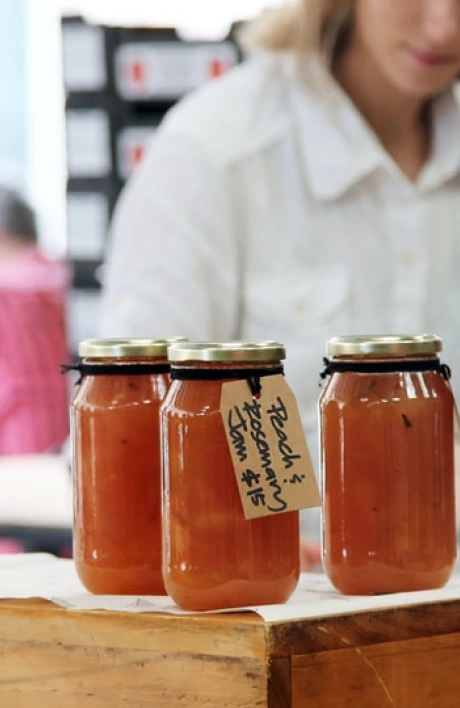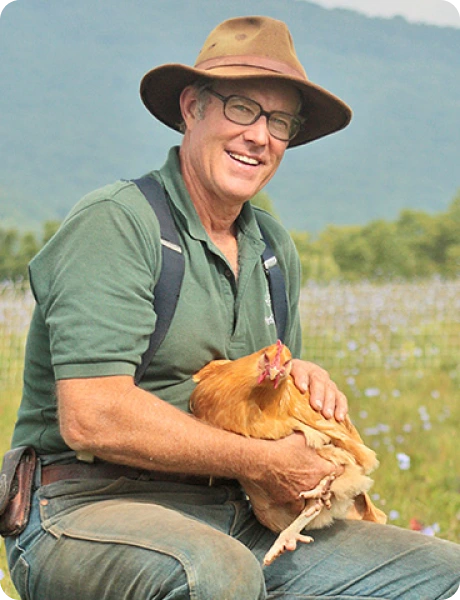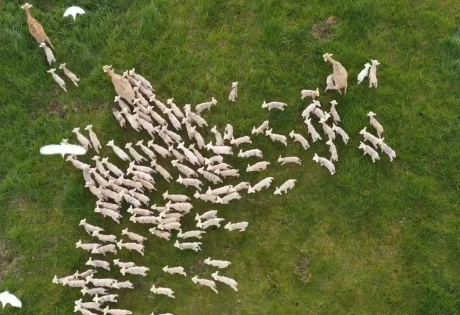Core beliefs
Act Local
The way that we produce our food has undergone significant changes in the last 100 years. The rise of the large, monoculture, industrialized farm has dominated the U.S. foodscape in the last few decades, with negative consequences for our health and environment.
The regenerative agriculture movement has been at the forefront of the fight back against these methods, with thousands of smaller-scale farms springing up, working under an ethos of returning our food to a more localized, community-based operation.
At Ashfount Investments, we believe that farm space businesses flourish when they choose to Act Local. But, what exactly do we mean when we talk about Act local, and how does this philosophy work in practice, particularly when we live in a highly globalized world?
We’ve Become Disconnected From our Food
Before the advent of industrialized “Big Food”, people in the U.S. ate food that was, for the most part, locally sourced. But, as industrialization began to take hold our population centers, as well as our food production sources, changed rapidly.
As working lives have got busier convenience has become the main aim of most food production and consumption – causing huge effects on health and our connection to the land and food.
Many people are now completely disconnected from their food – with little knowledge about where their food comes from, how it is produced, and whether it’s truly nourishing.
Our current system is now designed to produce food that is durable and cheap; with the ability to travel being placed high above taste and nutritional value.
The effects on our health – as individuals and on our shared home has been nothing short of devastating. Many Americans now have a diet that is energy-rich but nutritionally-poor, our farming land is at risk from soil degradation and desertification, and according to the EPA, greenhouse gases from modern farming has increased by 8.8% since 1990.
How did this situation arise? Why have modern farming practices developed this way?

We believe that farm space businesses flourish when they Act Local. We encourage all our businesses and partners to consider their local environment and community as an integral part of their business models and output. Because if we work together, we thrive together.
The Rise of the Monoculture Farm
During the Great Depression, farm subsidies were introduced to ensure the stability of the food system by helping to stabilize farmer’s incomes. Politicians wanted to subsidize crops that had the best chance of being value for money – high-yield crops that could be stored for a long period and could be used in a variety of ways. Corn and soybean were great crops for this purpose.
In time, large-scale farms grew up which produced a surplus of these crops. The surplus was then developed into products such as:
- High Fructose Corn Syrup – used to sweeten foods and beverages
- Ethanol – for fuel
- Cornstarch – used in diapers and crayons
- Soy Lechitan – used in frying fats and margarines
- Corn-based plastics
- Soy ink
- Soy-based lubricants

The huge surplus of these crops drove down their prices which made farming less profitable. And, as foods such as GM were introduced and monoculture farming threatened soil health, farmers found themselves spending ever-increasing amounts of money on agribusiness products such as chemical fertilizers and pesticides.

Subsidies to farmers have continued since the Great Depression – with over $25 billion paid out annually. Of these subsidies, 85% goes to only 15% of farm businesses, with the primary beneficiaries being large-scale producers of corn, soybean, and wheat.
Many subsidies are paid to producers in the monoculture space regardless of whether their farms need the support or not, which some have called “corporate welfare.” Subsidies can also drive up land prices, and often hinder farmers from diversifying land use. Smaller farms often only qualify for a very small amount of subsidy – and many producers of meat, vegetables, and fruit do not qualify at all.
The net result of the subsidy program over the last century has been to drive more farmers towards monoculture farming. And, because large-scale farms are a powerful force in the food lobby it has become increasingly difficult for those concerned about the health and nutritional value of our food to get their voices heard over “Big Food” interests.
But, despite the significant challenges presented by this food-system, a growing number of farmers are reclaiming the spaces lost to them by large-scale industrial agriculture.
Act Local – How Local Farmers Are Reclaiming the Food System
Although the rise of monoculture farming and the bureaucratic structures that support it have made life tricky for many smaller-scale farmers, many are waking up to the reality of a foodscape characterized by the industrialized food complex.
Many farmers want to return to a more diverse, environmentally sound way of producing food – one that puts community and farming practices that are healing rather than harmful at its center. The response has been the development of the Local Food Movement.
The Local Food Movement could be described as a collective of loosely affiliated growers and food producers that are grounded in a philosophy of keeping food locally sourced and sold. This might include small farms, food activists, community gardeners, chefs, restaurateurs, and processors. Values such as supporting the local economy, sustainability, better food, improved food health and safety, and disrupting large agribusiness might play a part.
Regenerative farming practices are often a core part of the movement, as they aim to work holistically, respecting nature and reconnecting with the land and soil. Environmental issues are also a large motivator for these types of food producers – they want to grow food and rear livestock on healthy land, and in ways that respect biodiversity and the natural Instincts of animals. Many smaller-scale farmers sell directly to customers and within a small geographical radius.
Additionally, producers in the regenerative space want to offer an alternative to industrial farming and help their local and wider communities to redevelop healthier relationships with the food they eat. This can mean taking an interest in public policy – particularly at the local level, as well as educating the local community about issues such as food nutrition and soil regeneration.Therefore, “Act Local” is about more than just selling produce at a local level. It’s an ethos and philosophy on food production that directly challenges the large-scale industrial food complex.

How are People Acting Local?
Food that is produced and sold locally or directly (cutting out large-scale agribusiness contracting) has been steadily increasing. By 2012, 7.8% of U.S. farms sold food either through direct to consumer sales or via smaller regional food distribution centers.
The exact form that these new ways of selling vary, but might include:
Community Supported Agriculture
CSA is a way of involving the community in the farm by creating a relationship between participants and the work of the farm. Typically, members will agree to take on some of the risks and rewards of smaller-scale farming ventures. They will pay an amount towards the business and in return gain a share of the harvest. Some people may volunteer their time to work on the farm.
Local Food Hubs
Local and regional food hubs allow small scale farms and growers to connect within a designated area. Different food hubs may help farmers to sell to restaurants or local businesses, and offer wholesale distribution services. They might also support sellers to sell to individual consumers via markets and stores.
Farmers Markets
Farmers markets enable food producers to sell directly to customers, often alongside other goods such as craft items or artisan products. They are a popular way to buy for many – with over 8,500 registered farmer’s markets in the U.S in 2017.
Farm Shops & Direct Sales / Delivery
Many smaller-scale producers offer drop-in times when customers can visit the farm and buy directly. Others offer delivery on products via e-commerce.
Why Act Local Matters
Small Farm Nation identifies several challenges that the Local Food Movement faces in selling directly to customers.
While this list is not exhaustive, it presents a selection of some of the biggest hurdles that local producers need to overcome when they choose to leave the industrial food complex and sell on a more local level. Although this may seem disheartening, a look at how Polyface Farm has tackled these issues can offer some inspiration and ideas on the way forward.
Inconvenience
Most people shop in large stores that are open 7 days a week and even 24 hours a day. There is a huge choice which a local farm on its own cannot match.
Distance
Most farms are not located in suburban areas – they are outside the cities and towns and into the countryside. For some people, this can mean hours of driving to pick up produce.
Unfamiliar products
Now that people are so used to food which has been pre-prepared or comes in a homogenized form (in taste, texture, and color), many people are wary of unfamiliar looking fruit and vegetables. They may also be unsure how to prepare fresh cuts of meat or whole animals such as whole chickens.
Bottleneck issues
While large farms have huge processing plants, much of which is automated, smaller farms can often struggle to find a local processor for their pork or beef. They may have to drive for hours for the processing and make processing appointments months in advance.
Lack of marketing skills and market penetration
Small farms often don’t know how to market to consumers.
Price
Most produce from regenerative farms cannot compete with the cost of extremely cheap, subsidized products.
Intense regulation hurdles
Especially if you live close to state lines.
While this list is not exhaustive, it presents a selection of some of the biggest hurdles that local producers need to overcome when they choose to leave the industrial food complex and sell on a more local level. Although this may seem disheartening, a look at how Polyface Farm has tackled these issues can offer some inspiration and ideas on the way forward.
Polyface Farm – Recent Developments
In July 2019, Joel Salatin, of Polyface Farm, announced that the farm had decided to begin shipping some of their products. This announcement had a mixed reception, but the ensuing discussion served as a great reminder of how, collectively, regenerative farms and Acting Local need to adapt in today’s competitive market.
When the announcement was made, some people criticized Polyface for their decision, because Joel Salatin had been an advocate of selling locally (within a four-hour radius) for many years. The argument from some quarters was that by shipping nationally, Polyface was betraying the ideal of selling locally.
However, Joel responded:

“Forty years ago a “no ship” policy made sense. Amazon did not exist and Polyface was the first game in town. Today, Wal-Mart is the largest purveyor of organics (industrial junk organics, to be sure) and that has flattened sales at farmers’ markets, Community Supported Agriculture, and direct farm sales.
We are still as committed as ever to local food systems and our prices will always be cheapest and loyalty to local customers always highest here at the farm and in our community. But as production compromise envelopes the organic sector, it’s time to go toe to toe, head to head, with an authentic alternative.”
Salatin raises an important point about the rise of organic food that is mass-produced by “Big Food” companies. While it’s positive that more people are beginning to wake up to the benefits of organic food – cheap mass-produced organic food causes several issues.
The Organic Issue
Walmart has introduced a range of cheap organic produce in the last few years which is causing concern for many food producers and environmental activists. While at first glance cheap organic food sounds like a positive idea, the way that this food is produced could become a serious issue.
Mark Smallwood of The Rodale Institute argues that: “if Walmart were to incentivize large-scale organic production, industrial organic practices would become more widespread. In this model, farmers adhere to just the bare minimum of organic standards and ultimately end up depleting soil health on a piece of land, abandoning it, and moving on to another.”
If smaller-scale organic farmers are absorbed into a larger web of industrialized organic agriculture, then they also run the risk of homogenizing the market once more and losing the important farmer-community connection that Act Local supports.
An additional issue with the rise of cheap organic is that the USDA has been slow to prosecute violators of organic standards. For example, Horizon, which is the biggest selling organic milk brand, was found to be violating organic standards by giving cows no access to pastures for grazing. Yet, a complaint filed by Cornucopia was closed by the USDA without any regulator visiting the facility.

An investigation by the Washington Post also highlighted the issue of imported food that had the label “organic” – but was far from it. They discovered that a shipment of 36 million pounds of soybean had been relabeled as USDA Organic during transit, despite them beginning as ordinary soybeans. This meant they were subjected to the usual agribusiness pesticides. The up-pricing of these fraudulent soybeans added around $4 million in value to them.
These kinds of violations of organic standards, as well as outright fraud, coupled with the cut-rate pricing of organic food by large industrial producers, add plenty of context to Polyface’s decision to begin shipping – and for re-examining the philosophy of “Act Local.”
Act global
At Ashfount Investments, we believe that the best food is locally produced, using regenerative farming techniques that heal the land and provide holistic solutions for farmers. However, we also understand that to tackle the issues we face collectively with climate change and the harm that industrial agriculture causes, we must work collectively to change attitudes to food – at the local, regional, national and international level.
Our foodscape must change globally, and this can only happen when we create a series of interconnected food webs that reconnect people with the value of nourishing food, produced in a regenerative way. The ethos of “Act Local” both as an ideal in a geographic sense, and as a philosophy within the larger foodscape, is a core step on the way to a more sustainable and healthy food system – for everyone.

Think Local
While some people were dismayed at the decision of Polyface Farm to start shipping, many felt that is raised important points about the philosophy of Acting Local.
One commenter said:
“What if, the meaning of “local” is changing & meant to be interpreted differently? Buying Polyface products and having it shipped is still buying local. I’m supporting a farmer that has ethically produced a superior product, which employs local human beings that package these local products that are delivered to me by a company the employs a local human being to deliver it. At least that’s how I see things.”
Although the environmental issues associated with shipping are not to be taken lightly, Joel Salatin is right when he talks about market forces and the need to expand the regenerative and local model. Of course, any business needs to stay competitive and move with the times, however, there are also excellent reasons for Act Local to be taken to a larger scale.
We currently have a web of interconnected food systems that focus for the most part on industrialized farming methods. To have any hope of disrupting this on a larger scale, smaller-scale farmers must band together and create alternative food webs under the ethos of Acting Locally.

This means respecting the values of biodiversity, healing the soil, nurturing the land and tackling climate change. But it also means getting the word out to as many people as possible and offering them an actual alternative. For many people in the U.S., living in large urban centers, it’s not realistic to find a local Farmer’s Market or drive for several hours to the nearest regenerative farm.
By shipping and developing interconnected food hubs, farms like Polyface can offer food to a wider range of people. It’s not a perfect system. Food that is shipped runs the risk of losing the in-person community connection that is so important for reshaping our values around food. But, in our increasingly digital world, online communities are also important, as is the ability to aces high-quality “Act Local” food – especially for those who have no other in-person alternative.
This is one way that smaller-scale food producers can mix the ideology of selling locally with pragmatism and considering market forces.


